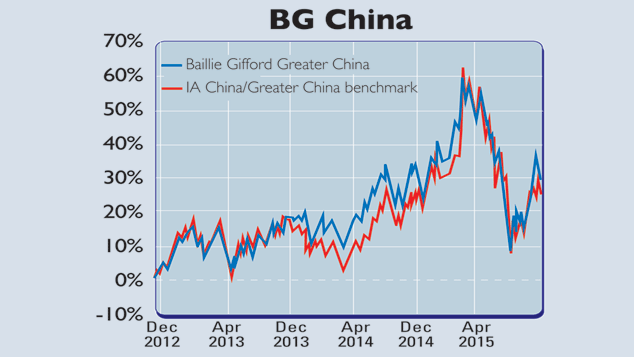
In June this year, I wrote in MoneyWeek that the mainland Chinese market was due a correction of at least 30%, and that it might be a good time to lock in any profits – but that investors should spend the summer researching their favourite Chinese stocks “in advance of the next leg up”. Looking back now, I think that what’s happened over the summer very much supports my case.
China is going through lots of change – some good, some bad – and the authorities are capable of mis-managing the situation (as they did with their panicky reaction to the absolutely necessary stockmarket correction). But the overall trends are incredibly positive and most Western observers remain circumspect on the outlook at best – a good sign from a contrarian point of view.
Overall the market has stabilised. The Shanghai index and the Hong Kong-listed China Index are up sharply from their lows, though still way off the highs we saw earlier this year. The margin balance (the amount of money being borrowed by traders to invest in stocks) on the Shanghai exchange is now back to US market levels (although global bears might argue that this is still elevated).
The renminbi – after its initial “devaluation” of 3% – has steadily strengthened so that it is now little changed from the point at which the “devaluation” was announced. In fact, the Chinese central bank has recently shifted the currency trading band higher because of this strengthening, blowing a gaping hole in the arguments made by China currency bears in August that the renminbi would collapse, exporting deflation across the globe.
A promising focus on welfare
The property market continues to recover. Sales volumes are up 30% this year, with average prices up 3% in leading cities. National inventory levels have fallen from around 17 months’ supply to around ten months’, suggesting the property recovery will continue, helped by further interest rate cuts from the central bank.
Meanwhile, reform continues – the highlight of the recently announced 13th five-year plan was the abolition of the one-child policy, but a welcome surprise was a focus on the social safety net – pensions, healthcare and so on. This will be very positive for consumption in the medium term, as people feel less pressure to save for their old age or healthcare spending.
Less welcome was the continued obsession with the level of GDP growth. This won’t help China’s shift from an investment-led economy to a consumption- led one. Artificial measures to hold growth at 6%-7% a year will just raise debt levels and hit returns on investment. I was also disappointed not to see more discussion of hukou (essentially permits controlling internal migration) and land reform, which would have given another boost to the urbanisation process.
But overall, the medium- and long-term investment case for China continues to strengthen. There will be a trend over the next few years towards including Chinese stocks in global indices, which will force passive funds and the majority of “active” managers to buy shares in these companies. On 12 November, for example, US-listed Chinese equity names such as internet giants Alibaba and Baidu were added to the MSCI index. Earnings expectations have fallen for next year, yet the market trades on a still-cheap looking 11 times.
The best funds to invest in now
The key is to get exposure to the right aspects of the China story. In a perfect world, you want to buy good Chinese companies wherever they are listed – this would mean a fund that invests in Hong Kong, the Chinese A-share market and US-listed Chinese stocks. Yet no China-focused funds do this in any serious way. One can have Hong Kong and a bit of the A-share market, but no US; or Hong Kong and US but no A-shares.
I would opt for the Hong Kong and US combination, as those two markets are where the best Chinese companies are listed. I’m also a strong believer in China’s internet sector. Like governments the world over, China’s has been suckered into believing that monopolies and significant oligopolies are just a fact of online life. That’s not great for consumers but it is good for shareholders in the likes of Alibaba – which dominates Chinese online retail – and Baidu, the largest shareholder in Ctrip, which controls over 80% of China’s online travel market.
So I favour growth fund managers who invest heavily in this area. This makes me lean towards the Baillie Gifford Greater China Fund. However, I am bullish on Japan too, so if you’d prefer a “one-size-fits-all” fund to cover developed and emerging Asia, then opt for Baillie Gifford Pacific, or Invesco Perpetual Pacific. There are tracker funds too, but Chinese equity indices tend to be dominated by the big banks, which I’m not so keen on – which is why I’d favour active fund management for China.
• Rupert has been a pan-Asian equities fund manager for the last 20 years.